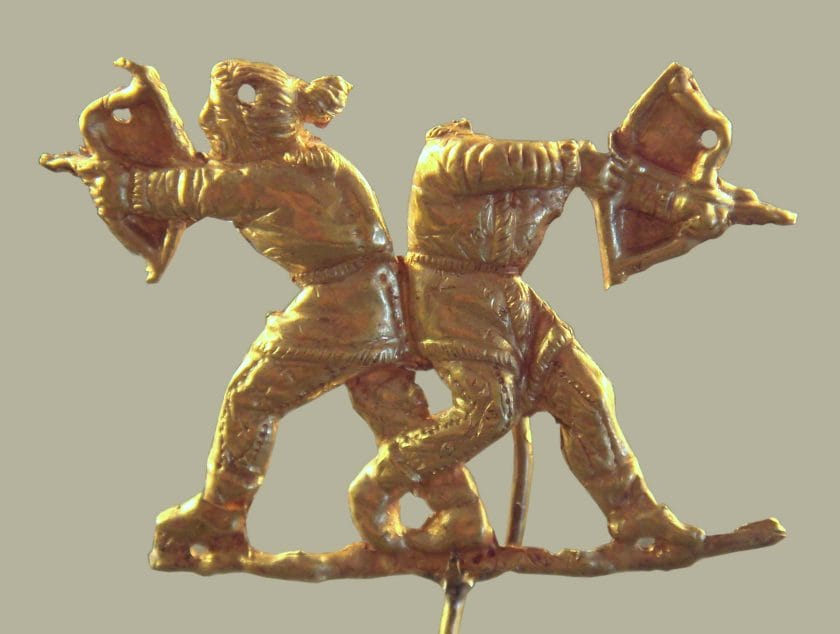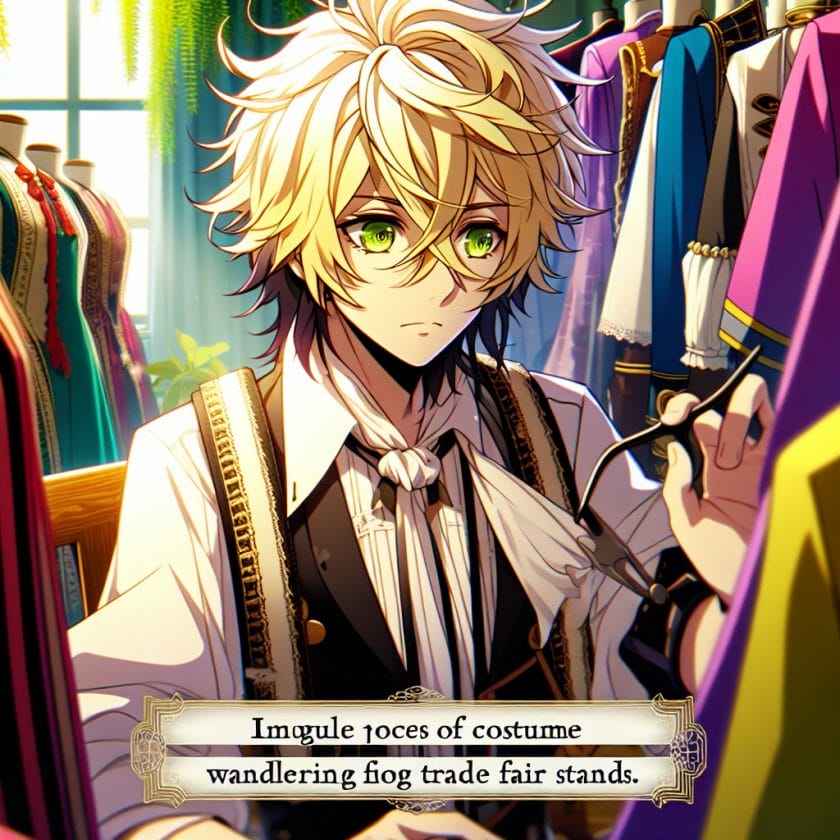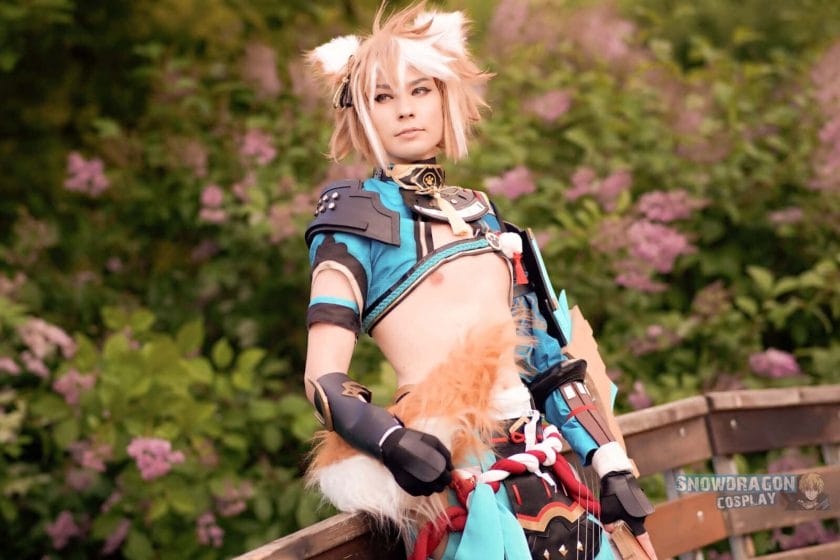[publishpress_authors_box layout="ppma_boxes_840322"]

1. What is Shibari fashion and how does it incorporate rope elements into everyday cosplay?
Shibari fashion is a unique style that incorporates the art of Japanese rope bondage, known as Shibari or Kinbaku, into everyday cosplay outfits. It involves using ropes to create intricate patterns and designs on clothing, adding a touch of sensuality and visual interest to the overall look. The ropes are strategically wrapped around the body, highlighting curves and creating a visually striking effect.
Incorporating rope elements into everyday cosplay allows cosplayers to add an extra layer of creativity and uniqueness to their outfits. It can transform a simple costume into a stunning work of art, capturing attention and making a bold statement. By incorporating Shibari-inspired rope elements, cosplayers can explore different themes, such as fantasy, anime, or steampunk, while also expressing their personal style.
The Origins of Shibari Fashion
Shibari fashion first gained popularity in the cosplay community as a way for cosplayers to push boundaries and explore new artistic expressions within their craft. It draws inspiration from traditional Japanese bondage techniques but adapts them for use in fashion and cosplay. The intricate patterns created by the ropes add texture and dimension to costumes, enhancing the overall visual impact.
Incorporating Rope Elements
To achieve a Shibari-inspired look in everyday cosplay, cosplayers can incorporate rope elements in various ways:
1. Wrapping: Cosplayers can wrap ropes around specific parts of their outfit or body to create visually appealing patterns or highlight certain features.
2. Knots: Different types of knots can be used to secure the ropes in place while adding an additional design element.
3. Draping: Ropes can be draped across shoulders or around the waistline to add movement and drama to the outfit.
4. Accessories: Cosplayers can also incorporate ropes as accessories by creating necklaces, bracelets, or belts using Shibari techniques.
By experimenting with different wrapping techniques, knot styles, and color choices, cosplayers can create unique Shibari-inspired looks that reflect their individuality and artistic vision.
Materials and Ropes
When it comes to materials for Shibari fashion, it’s important to choose high-quality ropes that are both comfortable and visually appealing. Natural fibers like cotton or hemp are commonly used due to their softness and flexibility. These ropes provide a comfortable fit while allowing for intricate tying and shaping.
Cosplayers can also explore ropes in various colors to match their cosplay theme or personal style. Vibrant colors like red or black can add a touch of drama, while pastel shades can create a softer and more whimsical look. It’s essential to choose ropes that complement the overall aesthetic of the outfit and enhance the desired visual impact.
In addition to ropes, other materials such as ribbons or cords can be incorporated into Shibari fashion to add variety and texture. These materials offer additional options for creating unique patterns and designs within the cosplay outfit.
Overall, Shibari fashion offers cosplayers an opportunity to explore their creativity by incorporating rope elements into everyday cosplay outfits. From wrapping and knotting techniques to choosing the right materials and colors, there are endless possibilities for creating stunning Shibari-inspired looks that stand out in any cosplay event or photoshoot.
2. When did Shibari fashion first gain popularity in the cosplay community?
Shibari fashion started gaining popularity in the cosplay community around the early 2010s. It was during this time that cosplayers began incorporating rope elements into their outfits to achieve a Shibari-inspired look. The intricate and visually striking nature of Shibari, which is a form of Japanese rope bondage, caught the attention of cosplayers looking to add unique and eye-catching details to their costumes.
The Rise of Shibari Fashion
As cosplay became more mainstream and diverse, cosplayers sought out new ways to stand out and express their creativity. Shibari fashion provided an opportunity for them to explore a different aesthetic and push boundaries within the cosplay community. It offered a blend of sensuality, craftsmanship, and artistic expression that resonated with many cosplayers.
Influence from Japanese Culture
The popularity of Shibari fashion in the cosplay community can also be attributed to its roots in Japanese culture. Cosplay itself originated in Japan, so it is not surprising that aspects of traditional Japanese art forms like Shibari would find their way into cosplay outfits. The incorporation of Shibari elements allowed cosplayers to pay homage to Japanese culture while also adding a unique twist to their costumes.
Overall, the rise of Shibari fashion in the cosplay community can be seen as a result of both its visually appealing nature and its connection to Japanese culture. As more cosplayers experimented with incorporating rope elements into their outfits, it sparked interest among others who were seeking new ways to elevate their cosplay creations.
3. How do cosplayers incorporate rope elements into their outfits to achieve a Shibari-inspired look?
Cosplayers use various techniques and methods to incorporate rope elements into their outfits and achieve a Shibari-inspired look. Here are some common approaches:
1. Strategic Wrapping: Cosplayers strategically wrap ropes around different parts of their bodies, such as the torso, arms, or legs. This creates visually interesting patterns and textures that mimic the intricate bondage techniques used in Shibari.
2. Knots and Ties: Cosplayers learn and utilize specific knots and ties commonly seen in Shibari to secure the ropes in place. These knots not only serve a functional purpose but also add to the overall aesthetic by creating visually appealing shapes and lines.
3. Layering: Some cosplayers incorporate multiple layers of ropes at different lengths to create depth and dimension in their outfits. This layering technique can be particularly effective when combined with strategic wrapping and knotting.
4. Rope Accessories: In addition to incorporating ropes directly into their costumes, cosplayers also use rope accessories such as belts, chokers, or bracelets to achieve a Shibari-inspired look. These accessories can be easier to work with for beginners or those who prefer a subtler approach.
By experimenting with these techniques and adapting them to suit their cosplay characters or themes, cosplayers are able to achieve unique and visually captivating Shibari-inspired outfits that stand out at conventions or events.
4. Are there any specific materials or types of ropes commonly used in Shibari fashion?
When it comes to materials used in Shibari fashion within the cosplay community, there is a range of options available depending on personal preference and desired aesthetics. Here are some commonly used materials:
1. Cotton Rope: Cotton rope is a popular choice due to its softness, flexibility, and comfort against the skin. It is often preferred for intricate bondage patterns as it allows for precise tying without causing discomfort or leaving marks on the body.
2. Hemp Rope: Hemp rope is another common material used in Shibari fashion. It offers a more rustic and traditional look, often favored for cosplay characters with a historical or fantasy theme. Hemp rope tends to have a rougher texture compared to cotton, which can add an authentic touch to the outfit.
3. Synthetic Rope: Some cosplayers opt for synthetic ropes made from materials like nylon or polyester. Synthetic ropes offer greater durability and strength, making them suitable for elaborate Shibari-inspired outfits that require more support or structural integrity.
4. Rope Alternatives: In addition to traditional ropes, some cosplayers explore alternative materials such as ribbons, cords, or even chains to achieve a Shibari-inspired look. These alternatives can add unique textures and visual interest to the outfit while still capturing the essence of Shibari fashion.
It is important for cosplayers to consider factors such as comfort, safety, and the specific requirements of their cosplay character when choosing the type of rope or material for their Shibari-inspired outfits. Experimenting with different materials can help achieve the desired aesthetic while ensuring a comfortable and enjoyable cosplay experience.
5. Can you provide examples of popular characters or themes that are often combined with Shibari elements in cosplay?
Examples of popular characters:
In the world of cosplay, there are several popular characters that are often combined with Shibari elements to create unique and visually striking outfits. One such character is Poison Ivy from DC Comics. Her seductive and nature-inspired persona lends itself well to the intricate rope work associated with Shibari fashion. Another character commonly seen in Shibari-inspired cosplay is Spider-Man’s nemesis, Venom. The combination of the dark and edgy aesthetic of Venom’s character design with the sensual and artistic nature of Shibari creates a captivating juxtaposition.
Themes commonly combined with Shibari elements:
Aside from specific characters, there are also various themes that lend themselves well to incorporating Shibari elements into cosplay outfits. One popular theme is fantasy or mythological creatures such as mermaids or nymphs. The ethereal and otherworldly nature of these beings pairs beautifully with the organic lines created by rope bondage techniques. Another common theme is gothic or alternative fashion, where the intricate patterns formed by ropes can enhance the overall dark and mysterious aesthetic.
6. What are some techniques or knots commonly used in Shibari fashion for cosplaying purposes?
Some common techniques used in Shibari fashion include:
- Single Column Tie: This basic knot is often used as a starting point for creating more complex designs. It involves wrapping the rope around a single point on the body, such as a wrist or ankle, and securing it in place.
- Diamond Pattern: This technique involves creating a diamond-shaped pattern across the body by crossing ropes over each other at specific points. It is commonly used to create visually appealing designs on the torso or limbs.
- Box Tie: This technique involves creating a harness-like structure around the upper body, typically using multiple ropes. It provides support and stability while also adding an element of aesthetic appeal.
7. How can someone with no prior experience learn to incorporate rope elements into their everyday cosplay outfits?
If you have no prior experience with Shibari or rope bondage techniques, it’s important to start by learning the basics. There are several resources available online, such as tutorials and instructional videos, that can guide you through the process step by step. Additionally, attending workshops or classes led by experienced practitioners can provide hands-on guidance and feedback.
When incorporating rope elements into everyday cosplay outfits, it’s essential to prioritize safety and comfort. Start with simple designs and gradually progress to more complex ones as you gain confidence and skill. Practice on yourself or willing friends before attempting intricate designs on others.
Tips for beginners:
- Invest in high-quality ropes specifically designed for Shibari fashion to ensure durability and safety.
- Start with soft and flexible ropes made from materials like cotton or silk, as they are more comfortable against the skin.
- Experiment with different colors and patterns of ropes to achieve your desired aesthetic.
- Always communicate openly with your model about their comfort levels and any potential limitations or sensitivities they may have.
8. Are there any safety considerations when using rope as a fashion accessory in Shibari-inspired cosplay?
Safety is paramount when incorporating rope as a fashion accessory in Shibari-inspired cosplay. It is crucial to educate yourself about proper tying techniques and potential risks associated with rope bondage. Some important safety considerations include:
Safety considerations:
- Never tie ropes too tightly, as this can restrict blood circulation and cause discomfort or injury.
- Be mindful of sensitive areas of the body, such as joints or nerves, and avoid placing excessive pressure on them.
- Regularly check for signs of numbness, tingling, or discoloration in tied areas, which could indicate nerve or circulation issues.
- Have a pair of safety shears readily available to quickly and safely cut through the ropes in case of an emergency.
- Consent and communication are essential. Always ensure that all participants involved are comfortable and have given informed consent before engaging in Shibari-inspired cosplay.
9. What are some tips for incorporating rope elements into different types of clothing, such as dresses, tops, or accessories?
Incorporating rope elements into different types of clothing can add an interesting twist to your cosplay outfits. Here are some tips to help you get started:
Tips for incorporating rope elements:
- Dresses: Use ropes to create unique strap designs or incorporate them into the bodice by weaving them through eyelets or attaching them strategically for added visual interest.
- Tops: Experiment with harness-like designs using ropes to create intricate patterns across the chest or back. Alternatively, wrap ropes around sleeves or use them as decorative accents along the neckline.
- Accessories: Add a touch of Shibari-inspired fashion to accessories like belts, chokers, or headpieces by incorporating small sections of rope into their design. This can create a cohesive and visually striking look.
10. Are there any cultural or historical aspects associated with Shibari fashion that cosplayers should be aware of?
Shibari fashion has deep roots in Japanese culture and history, specifically within the art of rope bondage known as Kinbaku. While incorporating Shibari elements into cosplay can be a creative expression, it is important to approach it with respect and cultural sensitivity.
Cosplayers should educate themselves about the origins and traditions of Shibari, understanding its historical context as an intimate practice rooted in trust and communication. It is essential to avoid appropriating or fetishizing this art form, instead focusing on celebrating its aesthetic qualities within the boundaries of consent and artistic expression.
11. How does the choice of colors and patterns on the ropes impact the overall aesthetic of a Shibari-inspired outfit?
The choice of colors and patterns on the ropes used in Shibari-inspired outfits can significantly impact the overall aesthetic. Here’s how:
Colors: Different colors evoke different emotions and moods. For example, using vibrant red ropes can create a bold and passionate look, while pastel tones may convey a softer and more delicate aesthetic. Consider the character or theme you are cosplaying as well as your desired visual impact when selecting rope colors.
Patterns: Patterns created by ropes can add depth and visual interest to an outfit. Intricate diamond or geometric designs may give a futuristic or edgy feel, while organic patterns like waves or branches can enhance a natural or fantasy-inspired look. Experiment with different knotting techniques to achieve desired patterns that complement your cosplay concept.
12. Are there any unique challenges or difficulties when working with ropes as a fashion element compared to other materials?
Working with ropes as a fashion element presents unique challenges compared to other materials commonly used in cosplay. Some of these challenges include:
Unique challenges when working with ropes:
- Durability: Ropes can be prone to fraying or wearing out over time, especially if not properly cared for. Regularly inspect and maintain your ropes to ensure they remain in good condition.
- Tension and balance: Achieving the desired tension and balance when tying ropes can be challenging, especially for intricate designs. It requires practice, patience, and a keen understanding of how different knots and techniques affect the overall structure.
- Comfort: Ensuring the comfort of the model is crucial when incorporating rope elements into cosplay outfits. The texture, weight, and tightness of the ropes should be carefully considered to avoid causing discomfort or restrict movement.
13. Can you suggest any resources or tutorials for beginners interested in exploring Shibari fashion within their cosplay creations?
If you’re a beginner interested in exploring Shibari fashion within your cosplay creations, there are several resources available that can help you get started:
Suggested resources for beginners:
- Websites and forums: Online platforms such as Rope Connections or Fetlife offer communities where you can find tutorials, discussions, and advice from experienced practitioners.
- Books and instructional guides: Books like “The Seductive Art of Japanese Bondage” by Midori provide detailed instructions on various Shibari techniques along with safety guidelines.
- Workshops and classes: Look for local workshops or classes led by experienced Shibari practitioners who can provide hands-on guidance and feedback.
- YouTube tutorials: Many experienced Shibari artists share their knowledge through video tutorials on platforms like YouTube, offering step-by-step instructions and demonstrations.
14. Have there been any notable collaborations between professional cosplayers and designers focusing on Shibari-inspired fashion?
Yes, there have been notable collaborations between professional cosplayers and designers focusing on Shibari-inspired fashion. These collaborations often result in stunning creations that showcase the fusion of cosplay and Shibari artistry. One example is the collaboration between renowned cosplayer Yaya Han and designer Atsuko Kudo, known for their latex couture.
Their collaboration resulted in a collection of latex outfits featuring intricate rope elements inspired by Shibari techniques. The combination of Yaya Han’s expertise in cosplay and Atsuko Kudo’s innovative designs created a visually captivating blend of fantasy, sensuality, and craftsmanship.
15. How has the perception and acceptance of Shibari fashion within the cosplay community evolved over time?
The perception and acceptance of Shibari fashion within the cosplay community have evolved significantly over time. Initially, there may have been some stigma or misconceptions surrounding this art form due to its intimate nature. However, as awareness grew and understanding deepened, more cosplayers began to appreciate the aesthetic appeal and creative possibilities offered by incorporating Shibari elements into their outfits.
Cosplayers now embrace Shibari fashion as a form of self-expression that adds an extra layer of artistry to their costumes. It has become recognized as a legitimate subgenre within cosplay culture, with dedicated events, workshops, and competitions specifically focused on showcasing Shibari-inspired creations. The growing acceptance reflects a broader appreciation for diverse forms of artistic expression within the cosplay community.
In conclusion, Shibari Fashion is a unique and captivating way to incorporate rope elements into everyday cosplay. Whether you’re looking to add a touch of elegance or unleash your inner creativity, this trend offers endless possibilities. If you’re interested in exploring the world of Shibari Fashion further, be sure to check out our cosplay services for expert guidance and stunning results. Let your imagination run wild and discover the beauty of rope-inspired fashion today!









